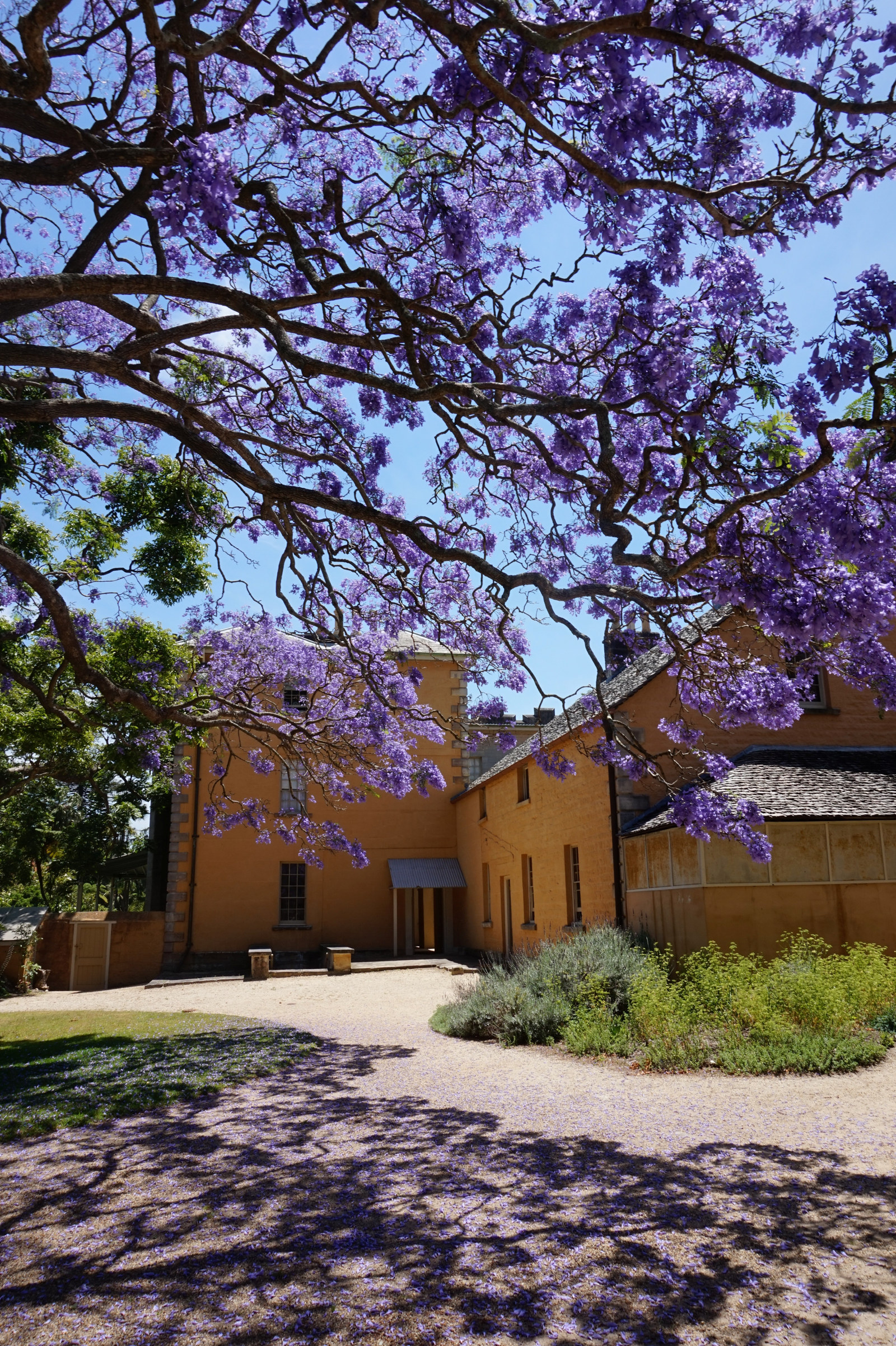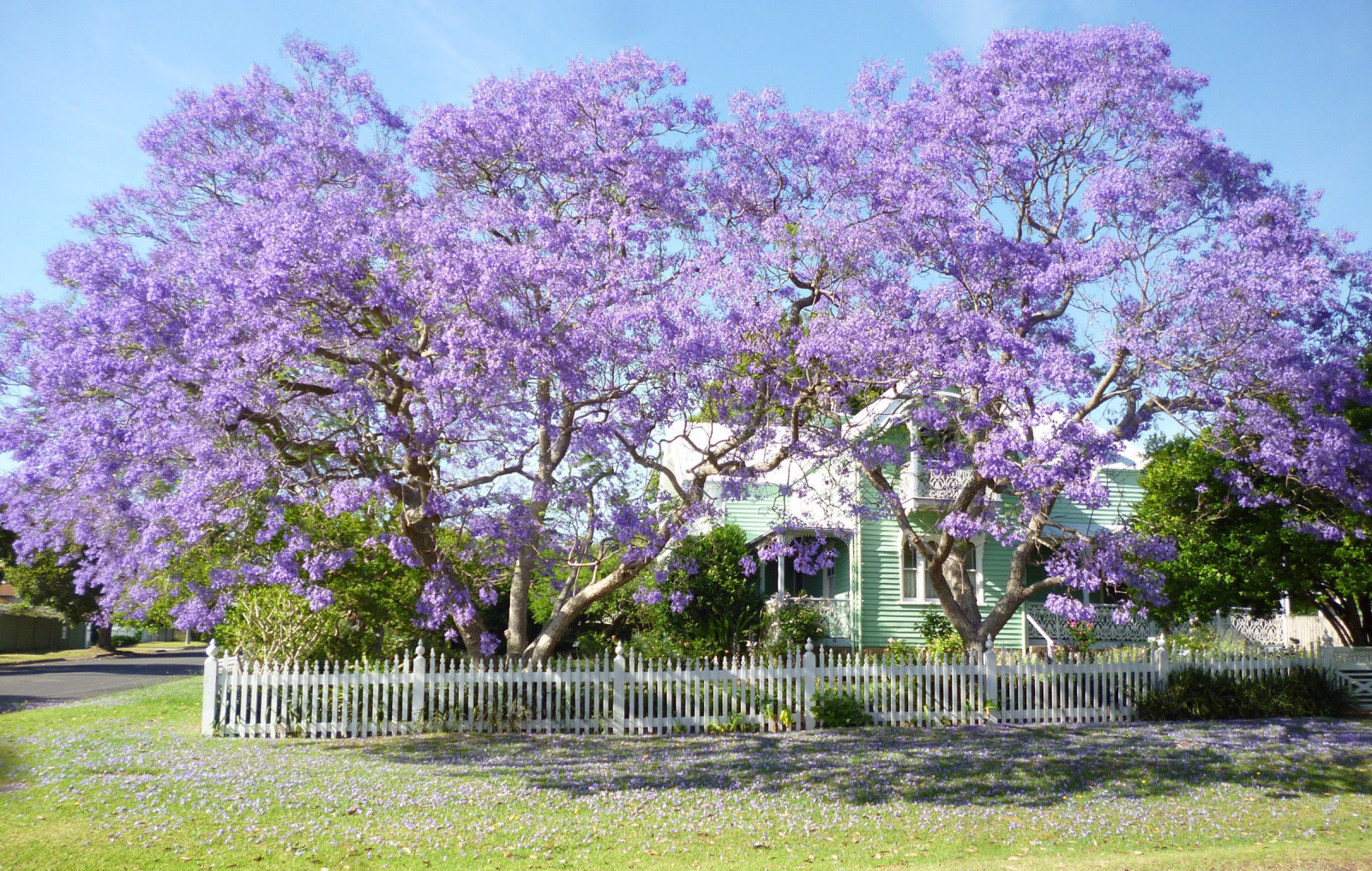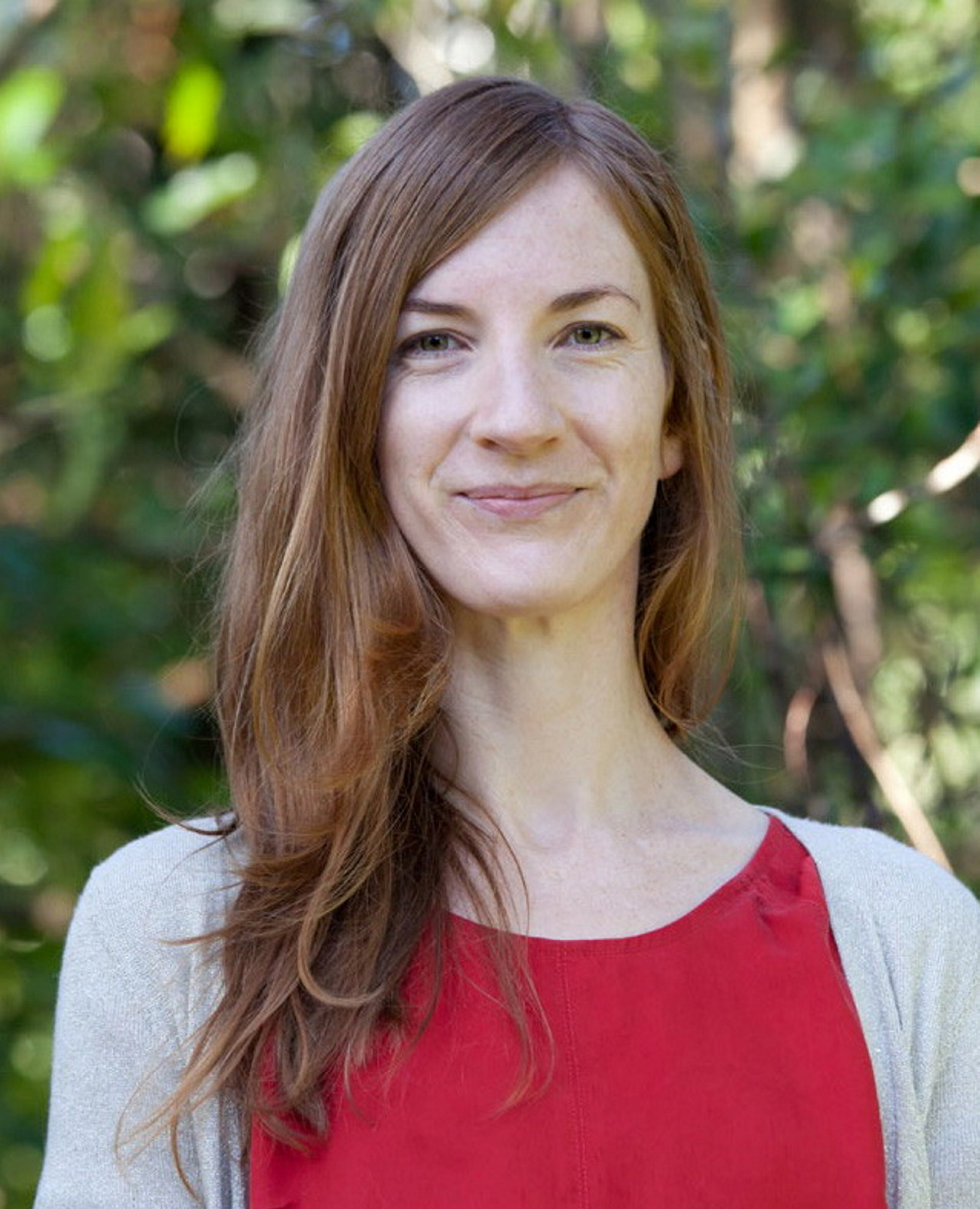The dream tree: Jacaranda, Sydney icon
November in Sydney is jacaranda season. As the trees flower from Paddington to Lavender Bay and beyond, the light seems to change, become bluer – at once softer and more hard-edged. Seen from the harbour or the land, no other blossoming has quite so transformative an effect on the city.
Those painterly canopies seem designed to be viewed against the warm yellow of Sydney sandstone or the scarlet flare of the Illawarra flame tree – a pairing popular for well over a century. One story credits November’s purple haze to the efforts of a hospital matron who sent each newborn home with a jacaranda seedling. A less romantic explanation lies in the fact the trees were a popular civic planting in the beautification programs of the early 20th century and interwar years, right up to the 1950s and 1960s.
The jacaranda’s hold on the city and its imagination is so firm that the tree is often mistaken for an Australian native; it’s actually indigenous to Brazil. The species most commonly planted in Sydney, Jacaranda mimosifolia, was collected and returned to the Royal Gardens at Kew, England, in about 1818. One early source gives the credit to plant hunter Allan Cunningham, who was sent on from Rio de Janiero to NSW, where he would later serve, briefly, as colonial botanist. 1
This most beautiful flowering tree is a native of Brazil, and no garden of any pretentions can be said to be complete without a plant of it. The specimen in the Botanic garden is well worth a journey of 50 miles to see. Its beautiful rich lavender blossoms, and its light feathery foliage, render it the gem of the season.
Sydney Morning Herald, 5 December 1868
A rare beauty
It’s difficult to imagine a time when jacarandas did not rain purple on Sydney streets. But though the odd tree was grown in private gardens from the 1850s, most were familiar only with the specimen in the botanic gardens. Unlike in England, where the frost-tender jacaranda languished without a hothouse or conservatory to protect it, Sydney’s climate was a match for Rio’s. Jacarandas, however, proved notoriously difficult to propagate – astonishingly so, as anyone who has tried to subdue rogue jacaranda seedlings sprouting up around a parent tree knows.
The mystery may have a simple explanation. Like other members of the Bignonia family, jacarandas are difficult to grow from cuttings, though they grow readily from freshly fallen seed. (For this reason, they’re considered a pest in native bushland.) Colonial horticulturists were likely working with cuttings from established trees that hadn’t yet flowered, or old seeds that had deteriorated on the high seas en route from England or Brazil.

The jacaranda flames on the air like a ghost,
Like a purer sky some door in the sky has revealed.
Excerpt from ‘The Jacaranda’ by Douglas Stewart, from The Dosser in Springtime (1946)
All this meant that in its early years as an Australian import, the jacaranda was considered one of the rarest as well as the most beautiful of trees. That changed in 1868, when landscape designer Michael Guilfoyle solved the riddle of propagation. Enthusiastic reports of his success neglect to mention how, but a paper read at the Horticultural Society in the same year gives some idea of the lengths he might have gone to. The method involves cuttings and cold pits, bell jars and bottom heat – enough to daunt even the most passionate of green thumbs.
Guilfoyle’s Exotic Nursery at Double Bay went on to supply the city’s most fashionable gardens with jacarandas, and many of the eastern suburbs’ stately old giants are his legacy. One, which adorned the magnificent garden at Clarens, in Potts Point, was known by the Martin children as ‘the dream tree’.2
By the 1930s, the jacaranda was so common that some forgot it had ever been anything other than ours: a real estate listing for a Wahroonga bungalow describes English oaks and ‘native jacarandas’ growing side by side. In the same decade, Sydney’s society pages started reporting young ladies wearing gowns of jacaranda blue.

LILAC tide
Today, Australia’s eastern coastline shades lilac as the flowering of the jacaranda moves south, beginning in Queensland in late spring and ending in Victoria in early summer. I was delighted to learn from horticulturist Stuart Macpherson that this is measurable: spring travels at about 3.2 kilometres an hour.
In Sydney, the sharp-eyed may have noticed the first blooms emerging from the bare branches of the trees along Oxford Street at the beginning of October. Famously, the jacaranda in the quadrangle at Sydney University warns students it’s time to study. Sydney Living Museums curator Scott Hill, an alumnus, says a second tree, which flowers in the vice chancellor’s courtyard a little while later – usually once exams have started – signals it’s too late. By early November, the jacarandas at Vaucluse House and Elizabeth Farm are in full bloom.
The last Sydney Living Museums jacarandas to flower are at our southernmost property, Meroogal, in Nowra. The Meroogal women planted the original jacaranda in 1910. This year it celebrates its 105th birthday. According to the family’s oral history, the magnificent tree was grown from a seed taken from one of the first jacarandas in the colony – a gift from the Dick family of Windsor. In turn, seedlings from this tree were distributed all over Nowra. Two of them have grown up to flank the original, whose electric-blue blossoms were once such a novelty that going to see the jacaranda at Meroogal was a favourite afternoon walk.

Late in jacaranda season comes the moment Delia Falconer describes in her biography of Sydney, when the number of fallen petals match those still suspended on the tree. I love the way the tree’s shadow is then coloured purple; it feels a bit like walking through an impressionist painting. It’s also the most treacherous time. A quick canvas of the office supplied two casualties by jacaranda: a pondful of fish, smothered by a day’s petalfall, and a car, written off after it rounded a corner slick with blossom.
Everyone has a jacaranda story, a favourite tree they return to year after year. As Falconer notes, this annual event in the life of the city is the closest thing we have to hanami, the Japanese tradition of viewing cherry blossom. The jacaranda may not always have been Sydney’s, but for a few magical weeks it is a dream tree for the city – ardently, abundantly ours.
Footnotes
- Proceedings of the Linnean Society of London, volume 1 (November 1838 to June 1848), London: R & J E Taylor, 1849, p. 68.
- Colleen Morris, Lost Gardens of Sydney, Sydney: Historic Houses Trust of NSW, 2008, p. 91.
Published on
